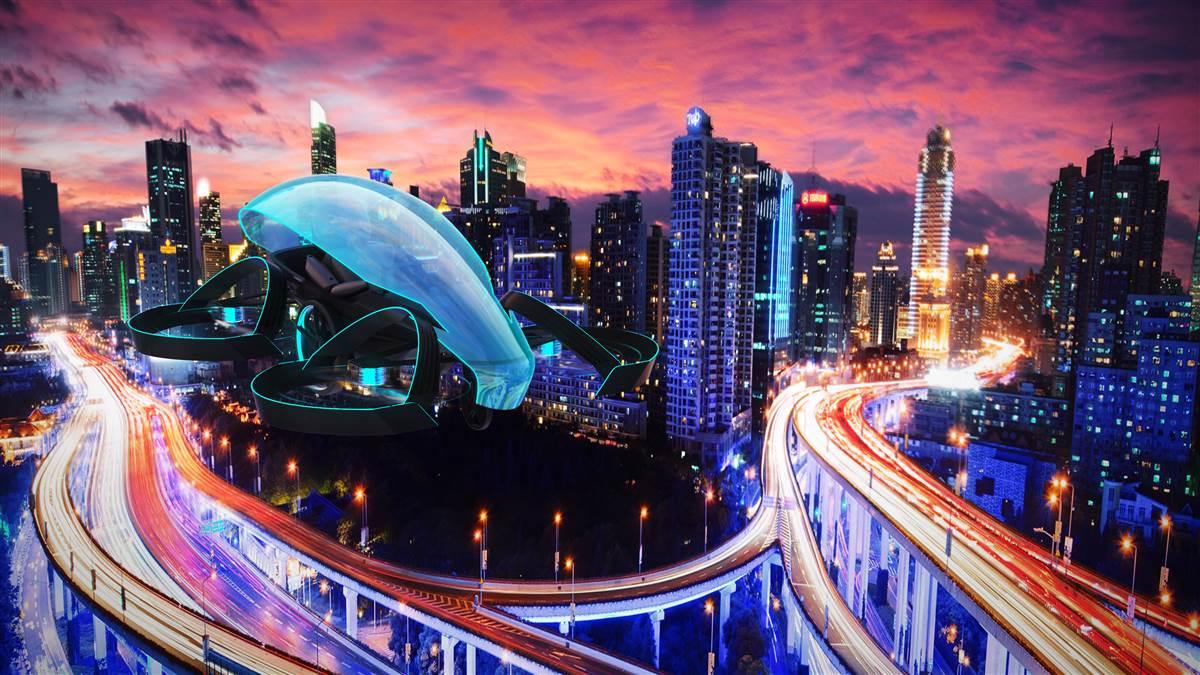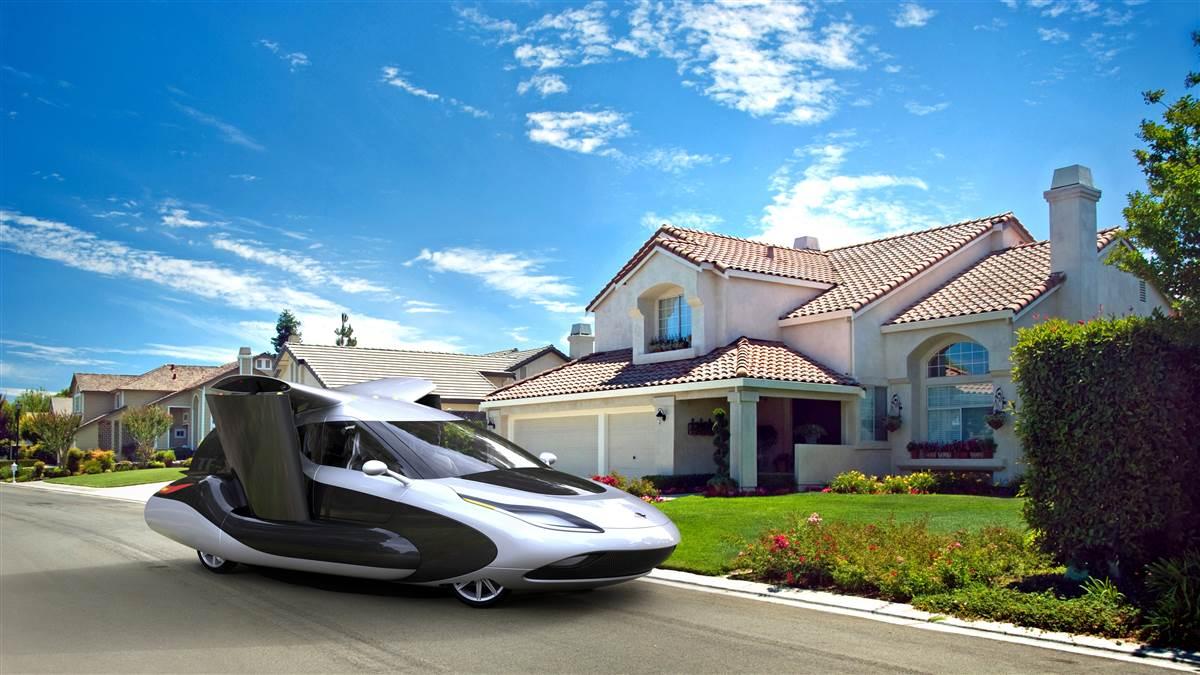Innovations: Fly like George Jetson
Flying cars were part of the 'Jetsons’' daily life in 1962,but when do we get ours?

Not so much the flying car. It appears Jetsons writers took their inspiration from a 1958 comic page series, “Closer Than We Think” about a Jetsons-lookalike family hovercraft.
Flying car attempts go way back. The Waterman flying car was certified in 1957 while the Fulton Airphibian got government approval in 1950. The Taylor Aerocar won certification in 1956. All failed because a good car is a terrible airplane and vice versa.
High hopes for turning Jetsons-style commuting into commercial success are still alive, as seen with today’s Terrafugia flying-car company and with a sudden flood of companies racing to develop electric-powered, human-carrying drones. A modified version of the Jetsons’ dream car, called the Space Car, may be “closer than we think.”
 Best shot at actually doing something
Best shot at actually doing something
Company name: Lilium
Location: Gilching, Germany
What: The Lilium Jet is a five-passenger vertical takeoff air taxi powered by 36 electrically powered small jet engines.
Is it also a car? No. That’s why it may succeed.
Why? Because it has already flown as a remotely piloted vehicle big enough to carry two people. Plus they partnered with Uber (see "Big Plans" at below).
Unique: It has no rudder or elevator. It gimbals its engines to change direction.
 Second-best chance for a flying car
Second-best chance for a flying car
Company name: Cartivator
Location: Tokyo
What: Cartivator’s SkyDrive is a four-rotor, drone-like electrically powered vehicle with a one-person center pod that looks like a Go Kart.
Why? Confidence. This is an after-hours project for 50 Toyota engineers and others, ages 16 to 60, with a $350,000 backing from Toyota. Confidence is so high the engineers claim they will use it to light the Olympic flame at the 2020 Tokyo Olympics. They haven’t told Olympics officials yet.
Mitigating factors: An Associated Press reporter visited the project to find a scale model flying reluctantly and sometimes crashing.
Is it also a car? Yes. Three wheels. It’s claimed to do 90 mph on the ground but only 60 mph in flight.
Unique: It will fly at 30 feet. Watch out for those overhead wires!
 Most ambitious plan
Most ambitious plan
Company name: Italdesign and Airbus
Location: Italy, France, Netherlands, and several other countries.
What: Modular electric vehicle called Pop.Up. It is supposed to fly this year and looks like a drone.
Is it a car? It definitely can be that.
How’s it work? Play along with me here. You go to a charging station to pick up a pod looking like a two-person German Smart Car. If it is already on an electric wheeled ground module you hop in, enter your destination, and it goes autonomously to your destination. Maybe you want to fly. You pick a pod that is attached to a rotor module or a rotor system; it flies to you and latches on. It, too, goes autonomously to your destination. Future models might carry more than two people. When you get out, the car-plane returns autonomously to its charging station to wait for the next person. Did I mention it can even go on a city train system?
Secret reason for the concept: Future megacities will be snake pit of gridlock.
 Another chance
Another chance
Company name: Terrafugia
Location: Woburn, Massachusetts
What: The TF-X all-electric vertical takeoff flying car.
Why? The company just received a cash infusion from a Chinese buyer. Terrafugia has been at the flying car game a long time, with an earlier model, the Transition, flown.
Is it a car? Yes
Mitigating factors: Terrafugia has been at this game a long time (2006) without entering production.
 Big plans
Big plans
Company name: Uber Elevate
Location: San Francisco, California
What: Uber, the ride-hailing service, wants to also be Uber Elevate the interurban company. An Uber car takes you to the Uber airport, where an Uber Elevate electric aircraft takes you 15 minutes away at 150 mph, which by car in gridlocked traffic would be more than an hour.
Fast track: Uber wants to demonstrate the system at the Dubai World’s Fair in 2020, and later in Dallas.
Aircraft: Uber is not going to build the aircraft. A consortium of companies will build it (Airbus, Aurora Flight Services, Bell Helicopter, Carter Aviation, Embraer, Lilium Aviation, and Pipistrel). Uber execs stress it is not a flying car and hate that term.
Is it a car? I told you not to say that!
Saving grace: Uber hired a NASA engineer to oversee the project.
 Trust the machine
Trust the machine
Company name: EHang
Location: Guangzhou, Guangdong Province, China with a branch office in Redwood City, California.
What: An autonomous one-person pod suspended beneath four electrically powered rotors called the EHang 184. The passenger hops in, punches his EHang-approved destination on the screen, and away you go. The software will prevent takeoff in bad weather and land on the nearest safe spot if something goes wrong.
Good news: It has been tested in China.
Morphing wing could control aircraft
The Wright brothers would be proud
By Alton K. Marsh What better way to celebrate the Wright brothers than to discover they were right about flight controls all along: The best way to control an airplane may be through wing warping, not ailerons and flaps. Efficient wing warping depends on computers—and those were not available to Orville and Wilbur Wright, who manually warped wood and fabric.
What better way to celebrate the Wright brothers than to discover they were right about flight controls all along: The best way to control an airplane may be through wing warping, not ailerons and flaps. Efficient wing warping depends on computers—and those were not available to Orville and Wilbur Wright, who manually warped wood and fabric.
The new approach to wing warping is the work of a team of scientists and engineers at Massachusetts Institute of Technology and NASA and comes from the intriguingly named MIT Center for Bits and Atoms. It was reported in a paper by Neil Gershenfeld in the journal Soft Robotics.
It’s a shape shifter, a wing made of tiny units and powered by just a couple of motors at one end that apply twist to the wing tips. Those units could also be used to build robots that can infinitely bend, meaning they could easily negotiate obstacles—just like the attack robot in the Terminator, which Arnold Schwarzenegger dispatched.
There’s already a flyable drone that has done aerobatics without the benefit of ailerons. The hope is to develop super-efficient long-range drones. So far there is no mention of designing transport aircraft this way.
While the Wrights swiveled their hips to activate cables and pulleys, twisting a wing of wood and canvas, a computer controls this wing. The skin is made of moveable slats like roofing shingles, which slide as the wing twists. Wear and tear from all that movement is slight, an MIT scientist said, but ways to reduce that friction are part of the research. The wing also can change shape not only to bank, but just to be more efficient.
Should the wing be damaged in flight, the subunits would still function, scientists say. It could take quite a wallop and keep flying, although there are limits.
Scientists promise the new wing could reduce fuel burn, reducing greenhouse gas emissions.
The same interlinked units that make up the wing can be used in other forms of engineering—such as a skyscraper or a bridge, even wind turbines. Ever see a huge, long truck carrying a single blade down the road for an electricity-generating windmill? Now you can take a box of subunits to the site and assemble the blade on location—even do it with robots if you desire. That raises the possibility of a self-driving truck—already a reality—that reaches its destination, where robots hop out and build a turbine blade. Hopefully they won’t mind if humans watch.



